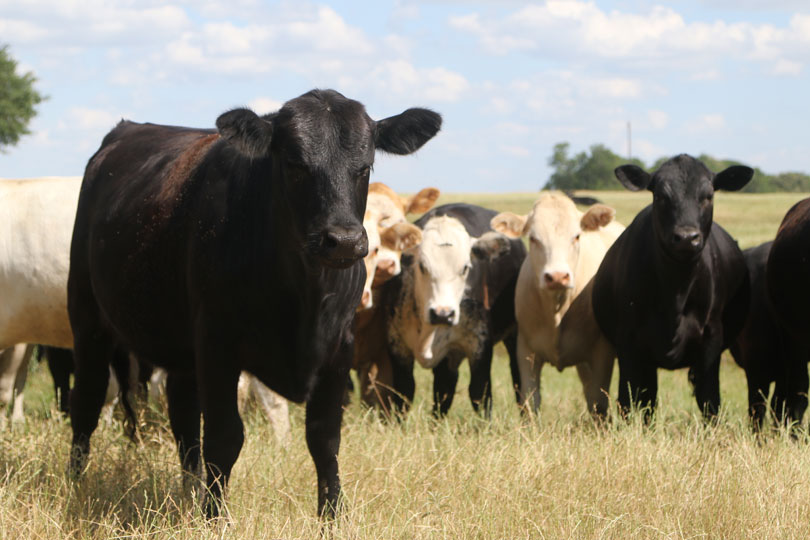By Jennifer Whitlock
Field Editor
Rabies is often thought of as a disease of pets or urban wildlife, but livestock can be exposed or infected, as well.
Often, that exposure occurs in pastures, where wildlife and domestic species interact, said Dr. Joanne Maki, technical director of the North American veterinary public health group at Boehringer Ingelheim.
“Texas has quite a variety of wildlife species that can transmit the disease. So, there is a risk, but it isn’t a huge risk, because there are vaccines that can help prevent the disease,” she said in an interview with Texas Farm Bureau Radio Network. “Boehringer Ingelheim has a vaccine that’s been used for decades in the U.S. that’s been proven to be safe and effective in horses, cattle, sheep, cats, dogs and ferrets.”
With a recent increase in skunks spreading rabies in the Panhandle and Central Texas, it’s important to ensure livestock and pets are protected through vaccination.
Another vector that will likely be a concern for Texas farmers and ranchers is the vampire bat, according to Maki.
Vampire bats are mainly found in Mexico and Central and South America, but their habitat has been expanding north into the U.S. over the past few years.
In Mexico, vampire bats cause about $47 million a year in damages through livestock predation and public health risk concerns.
“The vampire bat has been a problem for livestock producers in Mexico for years. It also feeds on other livestock, but primarily cattle, and those animals suffer because of the blood meals being taken,” Maki said. “Not only are those animals at risk for potentially having rabies transmitted by the bite of a vampire bat, but due to the blood meal the vampire bat consumes, it stresses the cattle or stresses the horse, and you see a decrease in that animal’s production levels.”
Since the vampire bat has been detected as close as 35-40 miles south of the Texas-Mexico border, the U.S. Department of Agriculture (USDA) and other governmental agencies have increased surveillance. Maki noted feedlots, farms and wild animal habitats are being surveyed for signs of vampire bat feeding.
“If someone has an animal with an atypical bite wound, such as on the ears or neck or withers, where vampire bats feed, [USDA’s] Wildlife Services wants to know about it,” she said. “The Texas Department of State Health Services (DSHS) should also have more information about the surveillance program, awareness and resources for people interested in learning more.”
The rabies case-reporting system in Texas is linked with federal information, which helps equip the Lone Star State to handle a potential vampire bat spread, Maki said.
Signs and symptoms of rabies in animals
In animals, rabies manifests in one of two forms: furious and paralytic. Maki noted the form is influenced by the animal species.
“Dogs and cats quite often get the furious form of rabies, the typical thing we think of when we think ‘rabid animal.’ Foxes can also become very aggressive, lose their fear of humans and attack and bite them,” she said. “But the other form, paralytic or ‘dumb,’ is when the rabies virus basically causes paralysis in an animal, and they’re showing neurological symptoms like staggering or weaving around during the daytime when that wildlife species would normally be out only at night.”
Other animals with paralytic rabies may hide under vehicles or in sheds or other places around homes and businesses because they’re sick and have lost their innate sense of self-preservation. Maki said this form can be even more dangerous to humans because people may think the animal needs help and approach it.
“Cattle often get the paralytic form. But since there are a lot of different diseases that can cause neurological symptoms in livestock, we want to be sure livestock owners are aware that rabies may be the issue,” she said. “Recumbency, not being able to rise, weakness in the hind legs, stumbling, hitting the head on a fence—those are not normal behaviors for a cow. Livestock producers should associate these signs with rabies, especially in unvaccinated animals or those with lapsed vaccinations, so they do not end up exposing themselves while handling that sick animals.”
If ranchers notice any of these signs in their livestock, Maki advised them to contact a veterinarian immediately. Veterinarians are best qualified to make preliminary differential diagnoses between rabies or other issues while handling the animal safely.
“If you’re bitten and the animal is rabid, the post-exposure prophylaxis is expensive. The technology has changed and the number of doses of vaccine you would receive are not as plentiful or as painful in the past, but it’s still expensive,” Maki said.
Ecologists and other scientists are working on both sides of the border to monitor vampire bats and provide timely information, she added.
For more information on the USDA APHIS Rabies National Management Program, click here.
A map of confirmed rabies cases in Texas by county is available here.

